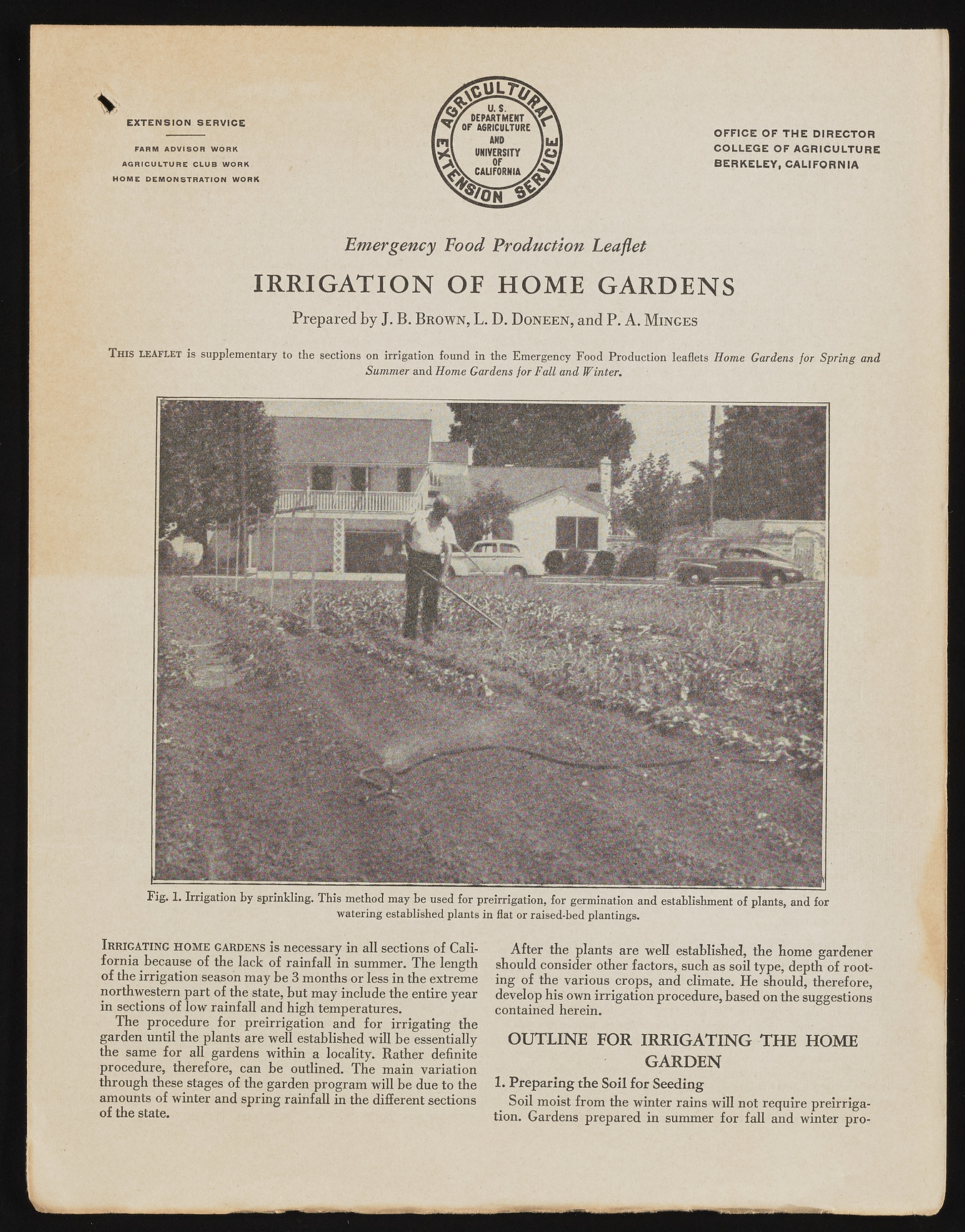Copyright & Fair-use Agreement
UNLV Special Collections provides copies of materials to facilitate private study, scholarship, or research. Material not in the public domain may be used according to fair use of copyrighted materials as defined by copyright law. Please cite us.
Please note that UNLV may not own the copyright to these materials and cannot provide permission to publish or distribute materials when UNLV is not the copyright holder. The user is solely responsible for determining the copyright status of materials and obtaining permission to use material from the copyright holder and for determining whether any permissions relating to any other rights are necessary for the intended use, and for obtaining all required permissions beyond that allowed by fair use.
Read more about our reproduction and use policy.
I agree.Information
Digital ID
Permalink
Details
More Info
Rights
Digital Provenance
Publisher
Transcription
Emergency Food Production Leaflet IRRIGATION OF HOME GARDENS Prepared by J. B. Brown, L. D. Doneen, and P. A. Minges T his LEAFLET is supplementary to the sections on irrigation found in the Emergency Food Production leaflets Home Gardens for Spring and Summer and Home Gardens for Fall and Winter. Fig. 1. Irrigation by sprinkling. This method may he used for preirrigation, for germination and establishment of plants, and for watering established plants in flat or raised-bed plantings. Irrigating h o m e gardens is necessary in all sections of California because of the lack of rainfall in summer. The length of the irrigation season may be 3 months or less in the extreme northwestern part of the state, but may include the entire year in sections of low rainfall and high temperatures. The procedure for preirrigation and for irrigating the garden until the plants are well established will be essentially the same for all gardens within a locality. Rather definite procedure, therefore, can be outlined. The main variation through these stages of the garden program will be due to the amounts of winter and spring rainfall in the different sections of the state. After the plants are well established, the home gardener should consider other factors, such as soil type, depth of rooting of the various crops, and climate. He should, therefore, develop his own irrigation procedure, based on the suggestions contained herein. OUTLINE FOR IRRIG A TIN G THE HOME GARDEN 1. Preparing the Soil for Seeding Soil moist from the winter rains will not require preirrigation. Gardens prepared in summer for fall and winter pro-

